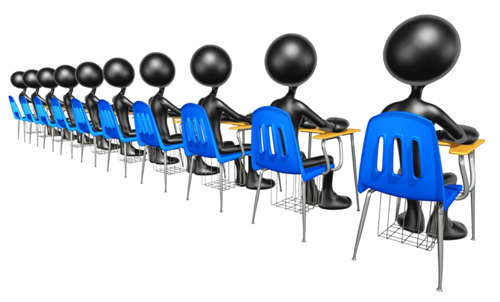“What we need now is a different kind of education,” says Pasi Silander, the development manager in Helsinki, Finland. He adds that education should now be aimed “to prepare people for working life.”
The changes in education in Finland were recently profiled by Richard Garner in The Independent (@Independent) [link]. Please don’t misread my quick summary here as an indication that this is a small change in how schools teach. What Finland is doing is nothing short of a major revolution, overturning years of established academic protocol.
Briefly, educational leaders in Finland (such as Liisa Pohjolainen, Helsinki’s chief of youth and adult education) decided that students, who at an early age are operating computers, should not be impeded by an old-fashioned approach to education based on a subject-matter expert imparting knowledge in one-hour time chunks. Most of us learned the old way. We went to a class on literature, then geography, then mathematics — then lunch — and wrapped up the day with biology followed by social studies and then, perhaps, by a foreign language. In general, such an approach to knowledge is history in Finland, or soon will be, as Garner describes:
Subject-specific lessons — an hour of history in the morning, an hour of geography in the afternoon — are already being phased out for 16-year-olds in the city’s upper schools. They are being replaced by what the Finns call “phenomenon” teaching — or teaching by topic. For instance, a teenager studying a vocational course might take “cafeteria services” lessons, which would include elements of maths, languages (to help serve foreign customers), writing skills and communication skills.
What’s happening with education in Finland is being much discussed and is by no means universally applauded. But I see lots of value in the new approach and some important lessons for all leaders — even if you’re not an educator.
- Leaders lead. Even though Finland is near the top in terms of performance (PISA ranking [link]), the country hasn’t stopped looking for ways to innovate further.
- Leaders challenge fundamentals. Finland is not simply innovating on the edge (although I am sure they do that as well); they are attacking the core assumptions that have shaped education since the Renaissance. If this new approach works well (I’d bet on it), not only will Finland be fundamentally changed, but education around the world is sure to follow. Finland is creating a new benchmark for how students should learn.
- Leaders grasp current realities, then change them. The changes being made in Finland are not just for the sake of change, but rather are driven by a fundamental transformation of what people currently do at work and how that trajectory into the future will require fundamentally different professionals with different mindsets, skillsets, and educational underpinnings.
- Leaders are not impetuous. It appears that Finland will not transform every school overnight, but rather will start with small, controlled experiments in order to (pun intended) “learn their way forward”. Via small, less risky, steps, the country will discover the best way to stage a more comprehensive (and more intelligent) roll-out of changes to the wider system. Sounds to me like a well thought-out formula for making big changes while managing the risk — exactly what senior leaders of organisations need to do in order to change their own basis for creating value.
- Leaders change systems. It is important to note how changes in one area (how the curriculum is imagined and structured) will have, as a consequence, a ripple affect upon classroom design, the role of the teacher/professor in the learning process, the tools needed to create a learning environment, and on and on. Big ideas often fundamentally recast the model for creating and delivering value. The Finnish educational system can be see as a blueprint for the types of questions any leader needs to ask — and answer — in order to reshape an entire organisational value system. It is, and must be, a systemic approach.
- Leaders confront laggards. Based on what I’ve read, the epicentres of resistance to the new model of education in Finland seem to be coming from those most vested in the old system. No surprise. Overcoming such a chorus of resistance is also part of leading any organisational system into the future. Getting to next is never easy, especially for one embarking on revolutionary change. One reason why we value leaders is that they do not allow anyone to stay stuck on the way things are, which is a prescription for irrelevance. They help change mindsets. Surely Finland has witnessed many administrators, teachers, parents (and, most of all, students) who were uneasy and quite fearful of changing the status quo. Leaders confront such behaviours by helping people imagine what the future needs to look like while reassuring them that, in time, it will be brighter for all.
- Leaders measure progress. New systems require new metrics, and regular monitoring of the right data is important to knowing what is working and what is not. As in business, education is driven by outcomes in the form of student learning. Most surely, the new Finnish model will require new ways to test student progress. In all organisations, the right measures must be found to see if major change is yielding progress, and not just disruption.
The Nextsensing Project is dedicated to helping people overcome the hurdles to finding their next. And it’s amazing how many who resisted change at first soon became its champions. Pasi Silander made the same point in the news article: “We have really changed the mindset,” he said. “It is quite difficult to get teachers to start and take the first step… but teachers who have taken to the new approach say they can’t go back.”

